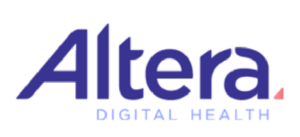In our swiftly changing, highly interconnected era, the ways we communicate are transforming at an unprecedented pace. Despite the dominance of email, messaging apps, and video conferencing, traditional faxing holds its ground, thanks to digital faxing revolutionizing the way we send and receive secure documents. According to Kings Research, the worldwide Online Fax Market reached a worth of USD 4.70 billion in 2022 and is estimated to hit USD 12.32 billion by 2030. For companies looking to transition into more modern, efficient ways of doing business, understanding how digital faxing works is not just an option; it’s a necessity.
What is Digital Faxing?
Digital faxing represents a modern advancement from traditional practices, enabling users to send and receive documents digitally without the requirement for physical machines or dedicated phone lines. Services like Lane’s modernized faxing, uniting old systems with innovative digital solutions.
Embracing a digital fax approach is pivotal for streamlining operations and cutting costs. Beyond mere convenience, digital faxing is a substantial leap forward in data security and seamlessly integrating workflows into the digital era.
How Digital Faxing Works
Sending a fax digitally is a relatively straightforward process. Here’s how it typically unfolds:
Preparation
The document requiring faxing is prepared as a digital file. Achieve this by either scanning a physical document or generating a digital file from the ground up.
Digital Faxing Process
The process of sending a digital fax involves a few key steps:
- Convert the document to the TIFF (Tagged Image File Format), which is the standard for fax transmissions.
- Encoding the TIFF file into a suitable data type for transmission — typically using a digital protocol such as T.38.
- The encoded data is sent via the internet or a dedicated fax network to the recipient’s digital fax server.
- Upon receipt, the data is decoded, and the digital fax is made available in the recipient’s inbox.
Receiving a Digital Fax
When a digital fax is received, the system routes the document to the recipient’s digital inbox, where it can be viewed and downloaded.
Transmission via the Internet or Dedicated Fax Network
Digital faxes are transmitted through either the internet using VoIP (Voice over Internet Protocol) or dedicated Fax over IP (FoIP) solutions for more secure and reliable transmission.
Security Measures in Digital Faxing
Security is a key concern in any communications framework, including secure faxing. Modern digital fax solutions are designed with robust security measures to safeguard sensitive information.
Encryption Methods for Secure Transmission
Data in transit during a digital fax transmission is typically encrypted using standard methods like HTTPS/SSL/TLS to ensure unauthorized parties cannot intercept it.
Authentication Protocols to Prevent Unauthorized Access
Digital fax systems often integrate user authentication methods, such as PINs, passwords, and two-factor authentication (2FA), to prevent unauthorized access.
Compliance with Industry Standards and Regulations
Digital faxing solutions are engineered to meet industry-specific compliance standards, ensuring the secure transmission of sensitive data while meeting regulatory requirements.
Advantages of Digital Faxing
Digital faxing offers a range of benefits over its traditional counterpart, including:
- Cost-Effectiveness: Digital faxing eliminates many of the costs associated with traditional faxing, such as paper, toner, and dedicated phone lines.
- Convenience and Accessibility: With digital faxing, documents can be sent or received from anywhere with an internet connection, making it highly convenient.
- Integration with Digital Workflows: Digital faxes can be easily integrated into a company’s digital workflow, allowing for seamless document management and archiving.
Contact Lane Today to Discover How our Digital Faxing Solutions Will Elevate Your Business
The shift to digital faxing marks a major evolution in business communication. It provides better security, cost savings, and convenience, fitting smoothly into modern workflows and keeping businesses competitive. Using digital faxing, like the solutions from Lane, helps streamline operations, protect sensitive information, and comply with industry standards. Reach out to Lane to see how digital faxing can elevate your business communications to a new level of efficiency and security.
To learn more about how digital faxing can elevate your business communication, contact Lane today.





